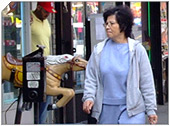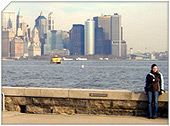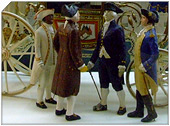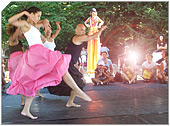West Bronx
, The Bronx, New York City
|
Getting Started
Index
NYC Neighborhoods
Manhattan
Brooklyn
Queens
Bronx
Staten Island
NYC Icons
Chrysler Building
Flatiron Building
Empire State Building
Safe NYC
NYPD
FDNY
NYC Weather
NYC Climate
NYC Weather Forecast
Winter Season
Spring Season
Summer Season
Fall Season
NYC History & Politics
New York City History
Tammany Hall and Politics
New York City Politicians
New York City Personalities
Culture of Gotham City
Culture of the city
Cultural diversity
City in popular culture
|
The West Bronx is that part of the New York City borough of the Bronx which lies west of the Bronx River; this roughly corresponds to the western half of the borough.
It is notable in that it has a noticeably more urban character than its eastern counterpart, and is located closer to the borough of Manhattan; also, the West Bronx was the first area outside Manhattan that was annexed by the City of New York. This occurred in 1874, and today's West Bronx was then known as the "Annexed District." In 1895, the city annexed the modern-day East Bronx as well along with western Queens County (today's borough of Queens), the City of Brooklyn (today's borough of Brooklyn), and Richmond County (today's borough of Staten Island.) However, it was not until 1914 that the modern-day Bronx was actually named "the Bronx" after the river that runs down the middle of the area.
In terms of physical geography, the West Bronx is distinct from the East Bronx in that it is much hillier; the East Bronx is flatter and coastal. Note that because the Bronx uses the same street numbering system as Manhattan, streets designated as "east" (e.g. East 161st Street) may actually be located west of the Bronx River. This is because the east-west divider is Fifth Avenue in Manhattan and Jerome Avenue in the Bronx (which is directly north of Fifth Avenue), and there is only a relatively small area in the Bronx west of Jerome Avenue.
Prior to the 1970s, New Yorkers generally saw the Bronx as being split into its eastern and western halves; however, with the urban decay that hit the southwestern Bronx starting in the 1970s, people began to see the borough as being fundamentally divided between the southwestern area ("The South Bronx") and everywhere else ("The North Bronx"). This notion still exists today, though many familiar with the Bronx insist that the borough is still more accurately divided into the East Bronx and the West Bronx.
Neighborhoods in the West Bronx are Riverdale, Kingsbridge, Woodlawn, Norwood, Bedford Park, Fordham, University Heights, Morris Heights, Mount Hope, East Tremont, Highbridge, Morrisania, Hunts Point, Melrose, and Mott Haven. The West Bronx includes the entire South Bronx.
The Southwest and Midwest Bronx are pre-dominately Hispanic and Black. Meanwhile, the Northwest Bronx maintains a mostly White population, especially in Riverdale, Woodlawn, and Van Cortlandt Village.
|
New York City Search
Quick NYC
|
|
|
 How safe is New York City?
How safe is New York City? Contrary to popular belief, the City consistantly ranks in the top ten safest large cities in the United States. The NYPD is the largest municipal police force in the world and has it's own Movie/TV Unit. |

New York has a humid continental climate resulting from prevailing wind patterns that bring cool air from the interior of the North American continent. New York winters are typically cold with moderate snowfall.  New York Weather Forecast New York Weather Forecast |

New York's two key demographic features are its density and diversity. The New York City metropolitan area is home to the largest Jewish community outside Israel. It is also home to nearly a quarter of the nation's South Asians, and the largest African American community of any city in the country.  Ethnic composition Ethnic composition |

New York Newspapers
 
|



 New York Weather Forecast
New York Weather Forecast
 Ethnic composition
Ethnic composition


















